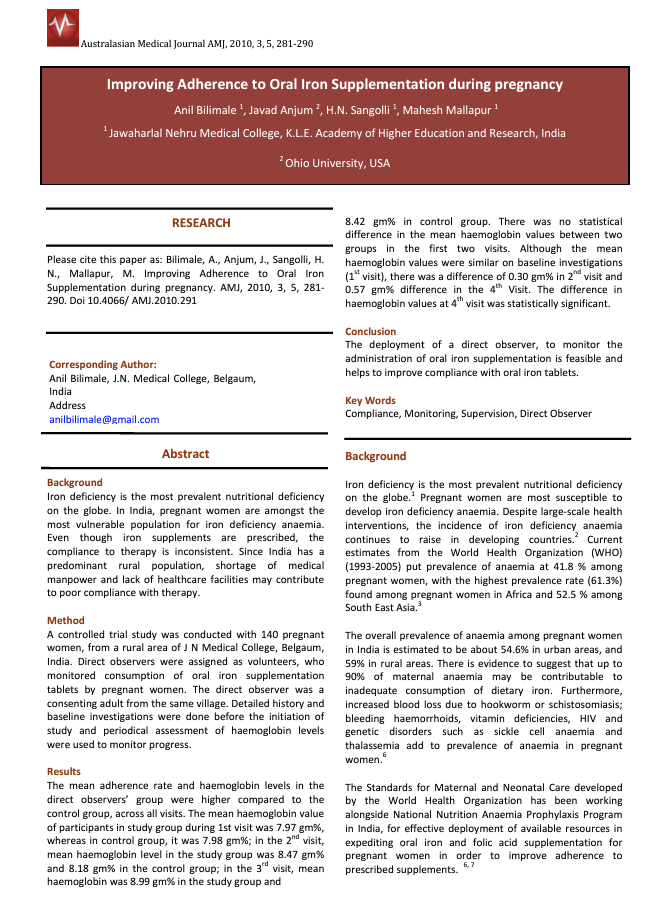Improving Adherence to Oral Iron Supplementation During Pregnancy
Publication Year: May 2010
Authors: Anil Bilimale, Javad Anjum, H.N. Sangolli, Mahesh Mallapur
Contributing Organization: Australasian Medical Journal
Background: Bilimale et al. 2010 is a longitudinal controlled trial study conducted at two sub centers in rural areas of Belgaum, India. The primary objective of the study was to document the effect on adherence of directly observing patients taking iron therapy and to monitor the hemoglobin status of pregnant women.
Methods: Data were collected from January-December 2008 for 140 pregnant female participants. Those who had a history of severe side-effects to iron therapy or already undergoing iron supplementation were excluded. Intervention and control groups were matched on age, sex, literacy level, caste, socioeconomic status, time and place of ANC registration, gravida and parity status of pregnant women, toilet facility at home, deworming status, footwear use, hemoglobin status at registration, and initial peripheral smear status. Over the course of 100 days and four visits, data were collected on hemoglobin estimation, peripheral smear examination, adherence rate, and a direct observer’s calendar on whether iron was taken twice a day or not.
Results: In the intervention and control many of the participants were registered in their first trimester, aged 16-25 and not literate. All participants were identified to have a moderate deficiency of daily calorie consumption. There was no statistical difference in the mean hemoglobin values between two groups in the first two visits, but the difference in hemoglobin values at fourth visit was statistically significant. Prevalence of anemia in the study group decreased from 95.8% to 82.8% by the fourth visit; whereas in control group it decreased from 98.5% to 92.6% by the fourth visit. The mean adherence rate in study group was higher (76.44%) than the control group (53.87%) from the second to the fourth visit. Forgetfulness was the most common reason for missing doses in the control group and side effects were the most common reason among the intervention group.
Conclusions: This study presents evidence that a direct observer may have been a significant factor in improving the adherence to iron supplementation. Researchers recommend replicating the study in other rural areas of the country.

